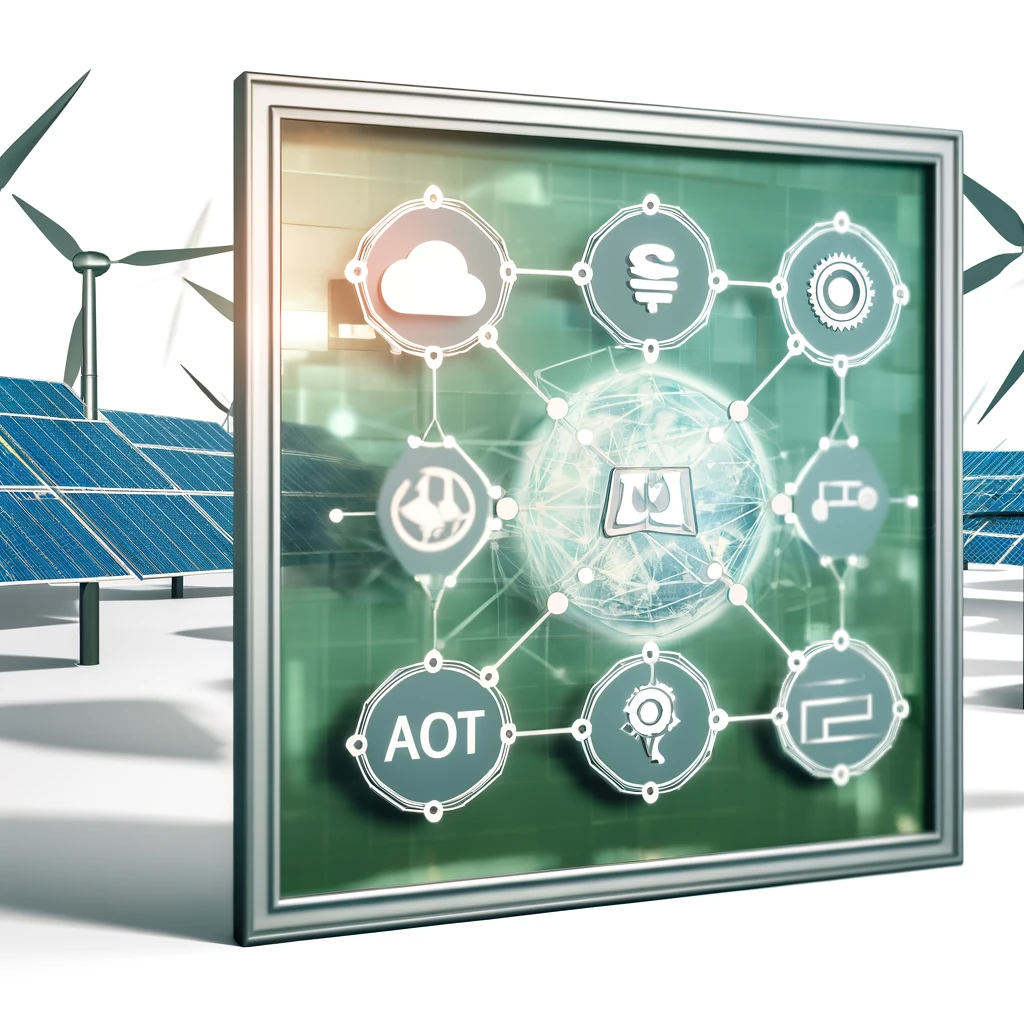In the rapidly evolving landscape of renewable energy, effective performance management is more critical than ever. As organizations strive to meet ambitious sustainability goals and optimize their operations, leveraging advanced performance management systems and metrics becomes essential. These tools not only help in tracking progress and ensuring accountability but also drive continuous improvement by identifying areas for enhancement and enabling data-driven decision-making. From energy production metrics that gauge the efficiency of renewable installations to financial metrics that assess economic viability, a robust performance management framework is indispensable for modern renewable energy enterprises.
Innovative technologies such as blockchain, AI, IoT, and virtual power plants (VPPs) are revolutionizing the way renewable energy organizations monitor and manage their operations. Blockchain technology offers unparalleled transparency and trust in energy transactions, while AI and IoT integration optimize energy production and equipment maintenance. VPPs enhance grid stability by aggregating multiple energy sources, and sustainability scorecards provide a comprehensive view of organizational performance. By embracing these cutting-edge practices, renewable energy companies can not only maintain a competitive edge but also ensure long-term success and contribute meaningfully to global sustainability efforts.
1. Key Performance Indicators (KPIs)
Effective performance management in renewable energy projects hinges on various metrics that track energy production, financial performance, and environmental impact. Energy production metrics include the Capacity Factor, which measures the actual output of a renewable energy plant compared to its maximum potential output, providing insight into efficiency and utilization. Energy Yield (kWh) quantifies the total energy produced by the installation over a specific period, offering a clear measure of the plant’s output. The Plant Load Factor (PLF) is another crucial metric, representing the ratio of actual energy produced to the maximum possible energy that could have been produced if the plant operated at full capacity continuously, thus indicating the plant’s overall performance.
Financial metrics play a pivotal role in assessing the economic viability and profitability of renewable energy projects. The Levelized Cost of Energy (LCOE) is a comprehensive measure that calculates the average cost per unit of electricity generated, considering all costs over the plant’s lifetime, making it essential for comparing different energy sources. Return on Investment (ROI) evaluates the profitability of investments in renewable energy projects, providing stakeholders with insights into financial returns. Additionally, Operational Expenditure (OPEX) per MWh tracks ongoing operating expenses relative to the amount of energy produced, highlighting the cost efficiency of the project and identifying areas for potential cost savings.
Environmental impact metrics are critical for ensuring that renewable energy projects contribute positively to sustainability goals. CO2 Emissions Avoided measures the amount of carbon dioxide emissions prevented due to renewable energy production, underscoring the environmental benefits of these projects. Water Usage monitors the consumption of water in renewable energy operations, which is particularly relevant for thermal solar and hydroelectric projects where water usage can be significant. Land Use Efficiency assesses the energy output relative to the land area occupied by the installation, ensuring that the land is used effectively and sustainably. Operational efficiency metrics, such as System Availability, Mean Time Between Failures (MTBF), and Maintenance Costs per MWh, further ensure that the renewable energy systems are reliable and cost-effective. Lastly, Customer Satisfaction Score and Community Engagement Index track the satisfaction of customers and the effectiveness of community engagement efforts, ensuring that the projects meet the needs and expectations of all stakeholders involved.
2. Performance Management Systems
Integrated monitoring platforms are essential for real-time tracking and analysis of performance metrics in renewable energy projects. These centralized software platforms consolidate data from various sources, such as SCADA (Supervisory Control and Data Acquisition) systems, financial records, and environmental monitoring tools, providing a comprehensive view of the project’s performance. By integrating these diverse data streams, project managers can quickly identify and address issues, optimize operations, and ensure that the energy production processes are running efficiently. The ability to monitor and analyze data in real-time allows for more responsive and informed decision-making, ultimately enhancing the overall performance and reliability of renewable energy installations.

Dashboards and reporting tools further enhance the management of renewable energy projects by offering visual representations of key metrics and trends. Interactive dashboards enable stakeholders to easily interpret complex data, facilitating a better understanding of project performance. Regularly generated performance reports provide detailed insights into achievements, challenges, and actionable plans, ensuring that all parties are informed and aligned. Predictive analytics play a crucial role in this process by forecasting energy production, predicting equipment failures, and identifying maintenance needs through the use of historical data and machine learning algorithms. This proactive approach helps in improving accuracy and decision-making. Additionally, benchmarking against industry standards and best practices allows organizations to identify areas for improvement, set realistic performance targets, and strive for continuous improvement in their renewable energy operations.
3. Accountability Mechanisms
Regular performance reviews are a fundamental component of effective performance management in renewable energy organizations. Conducting these reviews at individual, team, and organizational levels ensures that all aspects of the operation are evaluated comprehensively. Setting clear performance expectations and providing constructive feedback during these reviews help employees understand their roles, responsibilities, and areas needing improvement. This structured approach fosters accountability and motivates staff to achieve their best, thereby enhancing overall project efficiency and success. By systematically assessing performance, organizations can identify strengths and weaknesses, aligning individual and team efforts with organizational goals.
Incentive programs are another crucial element, designed to motivate employees and teams by rewarding them for meeting or exceeding performance targets. Linking bonuses and other rewards to specific metrics, such as energy production, cost savings, or environmental impact, ensures that the incentives are aligned with the organization’s strategic objectives. Transparent reporting practices are essential to maintaining trust and accountability with stakeholders, including investors, regulatory bodies, and the public. Publishing annual sustainability and performance reports provides a clear picture of progress and future goals, reinforcing the organization’s commitment to transparency. Continuous improvement programs further support this by encouraging innovation and efficiency. Using performance data to identify areas for improvement, these programs implement corrective actions to drive ongoing enhancements in operational processes, ultimately contributing to the sustainable growth and success of renewable energy projects.
4. Innovative Practices
Blockchain technology offers a revolutionary approach to tracking energy production and consumption with unparalleled transparency. By recording every transaction on a decentralized ledger, blockchain enhances accountability and trust in energy transactions and reporting. This technology ensures that data on energy generation, distribution, and consumption is tamper-proof and easily verifiable by all stakeholders, from producers and consumers to regulatory authorities. Such transparency not only fosters trust but also helps in identifying inefficiencies, optimizing operations, and promoting fair practices in the energy market.
The integration of AI and IoT technologies further optimizes energy production and operational efficiency. Smart sensors equipped with AI-driven analytics can continuously monitor equipment health and predict maintenance needs, reducing downtime and preventing costly failures. Additionally, the implementation of Virtual Power Plants (VPPs) aggregates multiple renewable energy sources, optimizing their combined output and enhancing grid stability. VPPs enable a more flexible and resilient energy system, ensuring that renewable energy contributions are maximized. To comprehensively evaluate performance, sustainability scorecards that combine financial, operational, and environmental metrics are essential. These scorecards provide a holistic view of organizational performance, guiding strategic planning and continuous improvement efforts. By leveraging these advanced technologies and tools, renewable energy organizations can drive efficiency, sustainability, and overall success.
Advanced Performance Management for Sustainable Success
By leveraging advanced performance management systems and metrics, renewable energy organizations can significantly enhance accountability, drive continuous improvement, and achieve their sustainability goals. Implementing innovative practices such as blockchain for transparent energy tracking, AI and IoT integration for optimizing production and operational efficiency, virtual power plants for grid stability, and sustainability scorecards for comprehensive performance evaluation are crucial. These tools and methodologies not only help in maintaining a competitive edge but also foster long-term success in the dynamic and evolving renewable energy sector, ensuring that organizations can meet both their economic and environmental objectives effectively.


Leave A Comment